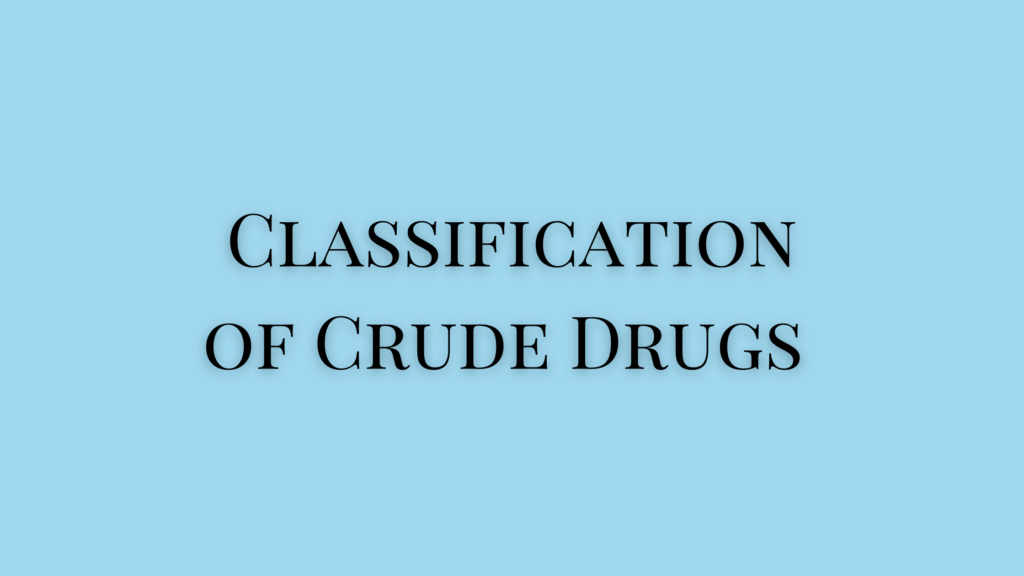Tannins are non-nitrogenous organic compounds with astringent properties. They are a large group of compounds with a wider distribution in plants.
Characteristics of Tannins
- Tannins are non-crystalline, oligomeric compounds with free phenolic groups in multiple units.
- They form a colloidal solution in water.
- They are soluble in water, alkali, alcohol, and glycerin.
- Tannins are partially soluble in ethyl acetate.
- They are soluble in acetate but insoluble in other organic solvents
- Tannins can bind to proteins to form insoluble protein complexes that have inhibitory effects on enzymes.
- They function as protection to heartwood and bark.
Classification of Tannins in Pharmacognosy
They are classified into two groups, based on the tanning test or Goldbeater’s test. Tannins can combine with animal hides and are detected by their ability to absorb standard hide powder. This process is called tanning and this tanning test is known as Goldbeater’s skin test. Tannins that show positive tanning are called true tannins and those who fail the test are called pseudotannins.
True Tannins
High molecular weight compounds such as polyphenols are true tannins. These true tannins are classified based on its hydrolytic reaction and the phenolic nuclei in its structure. These are hydrolysable tannins and condensed tannins respectively.
Hydrolysable Tannins
As the name suggests, hydrolysable tannins are hydrolysable by enzymes such as tannase or mineral acids. They are also known as pyrogallol tannins, as the phenolic acids are converted into pyrogallol derivatives on dry distillation. They are water-soluble, and the solution turns blue with ferric chloride.
Hydrolysable tannins mainly contain polyphenolic acids like gallic acid, ellagic acid, etc., which bond through ester linkages to a glucose molecule. They can be further classified based on the phenolic acids formed after hydrolysis.
- Gallotannins that contain gallic acid
- Ellagitannins contain hexahydrodiphenic acid which later produces ellagic acid.
Non-hydrolysable Tannins
These are condensed tannins that are non-hydrolysable by mineral acids or enzymes. They are also called proanthocyanidins.
Compounds with condensed tannins containing phenolic nuclei are related to flavonoids. They can form more complex tannins with proteins and carbohydrates.
On treatment with enzymes or mineral acids, these non-hydrolysable tannins produce insoluble red-colored phlobaphenes due to the polymerization reaction. These are characteristics of drugs like cinchona, cherry bark, etc.
Condensed tannins are soluble in water and the solution turns green colored with ferric chloride.
Catechin is flavan-3-ol and leucoanthocyanidin is flavan-3, 4-diol.
Non-hydrolysable tannins are commonly seen in plants of families Rosaceae, Leguminosae, Rubiaeae, Geraniaceae, Combretaceae, Polygonaceae, etc.
Pseudo Tannins
- Pseudo tannins are simple, phenolic tannins having low molecular weight.
- They do not respond to Goldbeater’s skin test.
- They are found in dead tissues and dying cells.
- Eg. Chlorogenic acid, gallic acids, catechin, etc.
Isolation of Tannins
Tannins are extracted using water or alcohol since they are soluble in these solvents. They are insoluble in all other organic solvents such as benzene, ether, or chloroform.
Water-saturated ether is used to extract tannic acid from all galls. A mixture of water, ether, and alcohol may also be used.
When the mixture of all three solvents is used, free acids like ellagic and gallic acids go along with ether while the true tannins go with water. Ether removes chlorophyll content as well.
After extraction, the ethereal and aqueous layers are separated, concentrated, dried, and subjected to filtration to purify tannins.
Methods of Isolation of Tannins
Isolation of tannins from plants can be done using different methods.
- Solvent extraction uses an appropriate solvent and the dried plant powder is mixed in. The solution is allowed to sit for a while and the tannins are extracted through osmosis.
- Decoction method uses a heat source to extract tannins from the solvent. The heat is usually 100°C and then it is allowed to cool down before filtering it.
- Pressurized water extraction uses static or dynamic water pressure to extract tannins from the solvent.
- Ultrasound method uses sound waves to destroy plant structures and yield tannins.
- Microwave-assisted extraction as the name suggests uses a microwave as the heat source.
- Ionic liquid-based microwave-assisted extraction uses ionic solution to soak the material and is heated in a microwave.
- Infrared-assisted extraction is a maceration process where the heat source is the infrared light and there is no solvent used here.
- Gamma-assisted extraction subjects the solvent-dissolved tannins to Co-60 gamma radiation
- Enzyme-assisted extraction uses cellulase enzymes in sea plants that have higher stability.
- Supercritical fluid extraction is an eco-friendly extraction method used for hydrolysable tannins
- Soxhlet extraction method is another method used for hydrolysable tannins but is not widely used due to higher cost.
References
- Shah, Biren N, Avinash Seth. (2010). Textbook of Pharmacognosy and Phytochemistry. Elsevier.
- Tannins: Extraction from Plants. DOI: 10.5772/intechopen.86040




